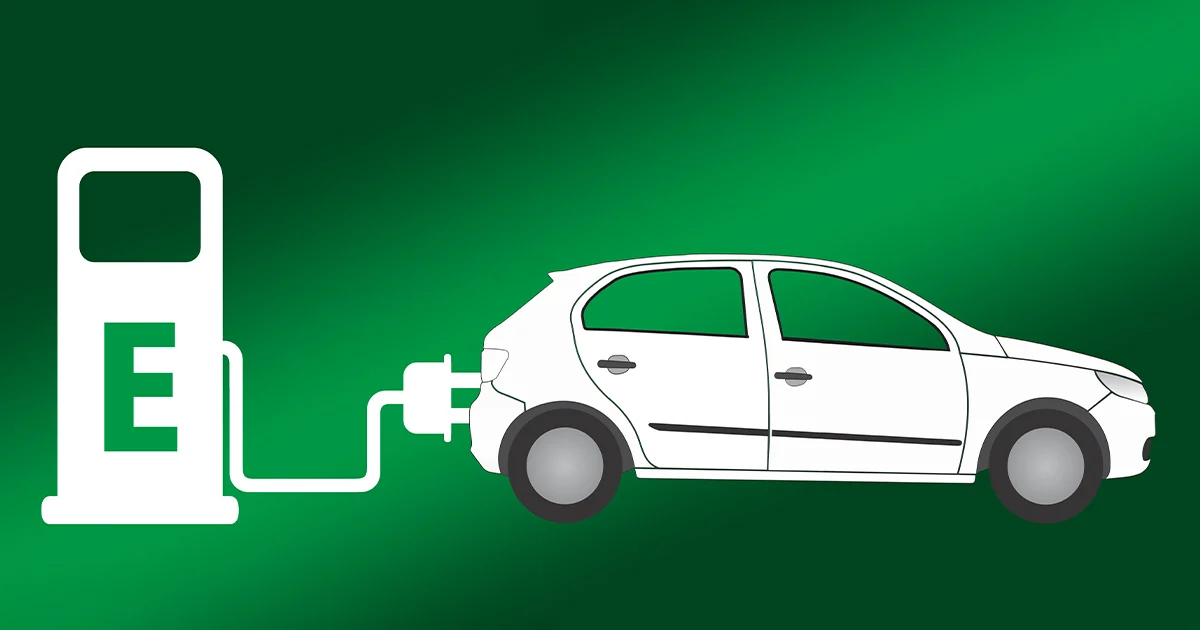Abstract
The global landscape of transportation is undergoing a profound transformation, driven by the imperative to reduce carbon emissions and mitigate the impacts of climate change. Electric Vehicles (EVs) have emerged as a potent and promising solution to the environmental challenges posed by traditional internal combustion engine (ICE) vehicles. With their potential to significantly reduce greenhouse gas emissions, enhance energy efficiency, and diminish reliance on fossil fuels, EVs represent a pivotal element in the transition towards sustainable mobility.
In this era of mobility evolution, India, as one of the world’s largest and fastest-growing automotive markets, stands at a crossroads. As a nation grappling with issues of urban congestion, deteriorating air quality, and mounting energy demands, India’s embrace of electric vehicles holds immense promise. Yet, the successful integration of EVs into the Indian transportation ecosystem hinges upon a well-structured and adaptable regulatory framework.
This paper embarks on a comprehensive exploration of India’s regulatory landscape concerning electric vehicles. It seeks to shed light on the multifaceted dimensions of EV policy, regulation, and implementation within the Indian context. Our analysis will delve into the intricate interplay between government initiatives, industry dynamics, environmental imperatives, and the evolving needs of consumers.
Key objectives of this study include:
- Assessing Current Policy Measures: An examination of the existing policies and incentives at the national, state, and local levels that aim to promote electric vehicle adoption in India.
- Evaluating Infrastructure Development: An analysis of the progress made in developing EV charging infrastructure, including challenges faced and strategies employed.
- Economic Implications: An exploration of the economic impacts of EV adoption on the automotive industry, job creation, and energy security.
- Environmental Benefits: An assessment of the potential environmental benefits, including reductions in carbon emissions and improvements in air quality.
- Consumer Adoption: A review of factors influencing consumer behaviour towards EVs, such as vehicle affordability, range anxiety, and awareness.
- International Comparisons: A comparative analysis of India’s regulatory framework with leading EV markets worldwide, drawing lessons and best practices.
Through this analysis, it endeavours to provide stakeholders, policymakers, industry players, and researchers with a nuanced understanding of the current state of EV regulations in India. Furthermore, it aims to identify areas for improvement, policy gaps, and opportunities for innovation that can accelerate India’s transition to an electrified, sustainable future. The success of India’s journey towards electric mobility hinges on a well-informed, adaptable regulatory framework that aligns economic development with environmental stewardship. By scrutinizing the regulatory landscape, we seek to contribute to the ongoing dialogue on electric vehicles in India, ultimately steering the nation towards a cleaner, more sustainable transportation paradigm.
Introduction
While electric vehicles (EVs) have existed for a long period, the level of innovation and interest in space has grown rapidly over the years past decade. In terms of performance, yes There is no longer the distance that once existed between Electric vehicles and internal combustion engines (ICE) partners. Electric vehicles are performing better than ICE’s means of transport across a range of transport policy objectives, including enhancing energy security, reducing dependence on crude oil, better air quality and reducing greenhouse gas emissions. Therefore, electric vehicles seem to be the most popular means of transportation. Clean technology for the future of mobility. Electric vehicle profitability has also improved significantly, while progressive, especially in battery and charging technology, costs should be reduced further. India is taking long strides towards achieving its target of 30% EV market share by 2030. The opportunity for electric vehicles has long been seen as an opportunity game changer for the automotive sector in India.
The desire to reduce pollution levels and dependence on oil imports has increased arguments in favour of using electric vehicles. Post-liberalization India this journey includes rapid urbanization, migration and economic growth. It is also the cause of traffic congestion in the city. Urban areas have large and intense deterioration of air quality. India has had the worst pollution record in 2019, with 21 out of 301 most polluted cities in the world (six cities 10 most polluted cities). The number of electric vehicles so far remains limited due to weak customer base appetite and barriers to infrastructure, among other factors. Many electric vehicles introduced in India have failed customer expectations, with persistent concerns about Upfront cost, range, speed, battery life and battery technology. Consequences of the Coronavirus epidemic and subsequent lockdowns also had dire consequences for the auto industry, continuing to hinder the transition to electric vehicles, as well many projects were postponed while electric vehicles represent less than 1 per cent of global market money, the downside is that there is a lot of room for growth. Furthermore, India is one of the world’s leaders in the field of unitary electric vehicles. sales; Therefore, any change in the number of electric vehicles is likely to have a significant impact on the global penetration of electric vehicles. Government Research Institute NITI Aayog clarifies that adoption is faster and Production of hybrid and electric vehicles (FAMEII) and other policies supporting electric mobility are expected to push electric vehicle sales penetration rate to 30% in passenger cars, 70% for commercial vehicles, 40% for buses and 80% for two-wheelers (2W) and three-wheeled (3W) by 2030.
Existing Regulatory Framework of EVs in India
The regulatory framework for electric vehicles (EVs) in India is primarily aimed at promoting the adoption of electric vehicles and supporting the development of charging infrastructure. India’s National Electric Mobility Mission Plan (NEMMP) and Faster Manufacturing and Adoption of Hybrid and Electric Vehicles (FAME) program are key policies driving this effort, to achieve a target of 6 to 7 million electric vehicles on Indian roads by 2020. Additionally, the Central Motor Vehicle Rules (CMVR) have been amended to include specifications for electric vehicles, such as battery performance and safety norms. The Goods and Services Tax (GST) on electric vehicles has also been reduced to make it more affordable for buyers.
The core differences between the operation of cars and electric vehicles make it difficult to have the same set of laws for both. In this section, we will discuss some of the differences between the two and briefly understand why electric vehicles require a different regulatory regime. Motor vehicles run on internal combustion engines, while most electric vehicles run on batteries; therefore the standards required to permit the operation of electric vehicles are different from those of motor vehicles. Although the Motor Vehicles Act, 1988 (MV Act) does not provide legislation for electric cars and buses, there is legislation applicable to e-rickshaws and e-trolleys.
E-rickshaws and electric vehicles are a separate category under the MV Act, but the road to their regulation is as rocky, if not more so. E-rickshaws have been popular in India for a long time but they are very disorganized. As of 2016, e-rickshaws do not require registration or licensing, meaning anyone can drive an e-rickshaw on the streets. E-rickshaw drivers do not even need to take a driving test. This leads to a confusing database of e-rickshaws and drivers, and in case of an accident, it becomes difficult to hold the culprit responsible. Lately, e-rickshaws and e-carts are strictly regulated. The law granting exemption from licensing and registration requirements for e-rickshaws has been repealed and is no longer followed. Different states in the country have different guidelines regarding e-rickshaws with the main objective being customer safety.
The Ministry Of Power issued the clarification to douse speculation over whether the activity of EV charging through batteries falls under the sale and purchase of power, citing provisions of the Electricity Act 2003. Section 2 of the Electricity Act defines a consumer as any person who is supplied with electricity for his use and includes any persons whose premises are for the time being connected to receive electricity whereas trading is defined as procurement of electricity for resale thereof. The charging of a battery essentially involves the utilization of electrical energy for its conversion to chemical energy, which gets stored in the battery. Hence, the charging of the battery at a charging station of an electric vehicle will include a service requiring the consumption of electricity by the charging station and earning revenue for the same purpose from the owner of the vehicle, the ministry said.
The central government also constituted the National Board for Electric Mobility (NBEM) in 2011. The board aims to promote electric mobility and manufacturing of electric and hybrid vehicles and their components in the country. Key functions of the NBEM include exploring and recommending collaborations and tie-ups for technology acquisitions, engaging technical experts and exploring possible agreements with leading research and development centres globally to make technology available to the domestic industry. On March 18, 2016, the Model Building Bye set was revised. The 2016 Bye Law has been published. Something important. The reason behind updating the Model Building Regulations 2004 is that the process follows the 2004 Act. Model building orders require obtaining several approvals from various authorities. It is one Main cause of delay in construction and completion of projects. The 2016 Act aims to reduce human interface by providing a single online portal structure window system, following a government initiative of the real estate sector. The 2016 Act may become a boon to developers as it is simple and unified.
Click Here To Download The Paper


📌Analysis of Bills and Acts
📌 Summary of Reports from Government Agencies
📌 Analysis of Election Manifestos

